
Jim Schulz Jim Schulz 1″ scale, diesel switcher, gondola, and track kitsRiding Railkits, Inc.249 MacPherson Dr.Corbeil, Ontario P0H 1K0 CanadaPrice: $1,995 for locomotive; $350 for gondola (not including trucks and couplers); $149.95 for gondola detail kit; $59.95 for a 10-foot section of pre-fabricated trackWeb site: www.ridingrailkits.com Generic, industrial, four-wheel diesel switcher and gondola kits for […]
Read More…
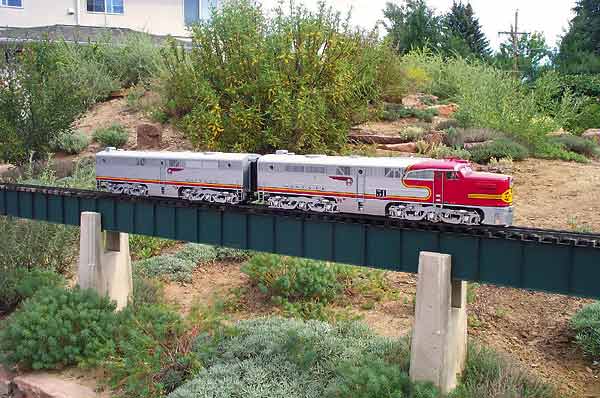
Marc Horovitz 1:29 scale, gauge-1 Alco PA-1 A-B diesel set USA Trains PO Box 100 Malden MA 02148 Price: $689.95 Web site: www.usatrains.com Mostly plastic, scale models of Alco PA-1 units; all wheels powered; four traction tires per unit; sprung, articulated trucks for short-radius curves; sound ready; six electrical pickups per truck; large can motor […]
Read More…
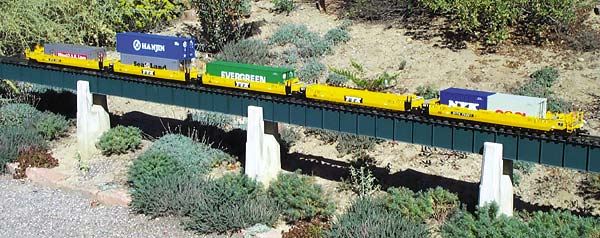
Marc Horovitz 1:29 scale, gauge 1, intermodal train set and container set USA Trains PO Box 100 Malden MA 02148 Web site: www.usatrains.comPrices: See text Description: Ready-to-run, plastic and metal, five unit, articulated TTX intermodal train set for carrying containers; metal walkways; Timken roller-bearing trucks (axle ends do not rotate); hook-and-loop couplers installed, knuckles provided; […]
Read More…
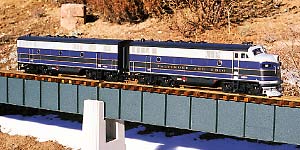
Marc Horovitz 1:29 scale, gauge-1 F3 A and B units USA Trains PO Box 100 Malden MA 02148 www.usatrains.comCheck with your local dealer for price and availability Plastic models of F3 diesels; A and B units sold together; each unit has two motors and four powered axles; working smokestacks; directional marker and headlights; rubber diaphragms; […]
Read More…
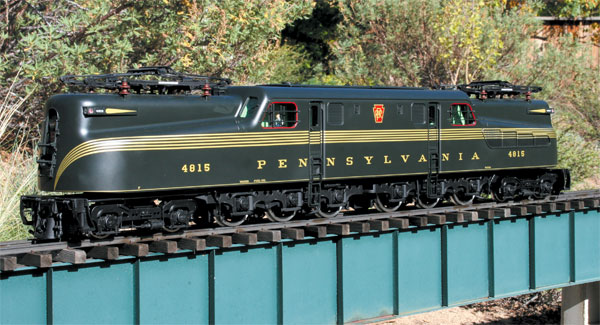
Marc Horovitz 1:29 scale, gauge 1, GG-1 locomotiveUSA TrainsPO Box 100Malden MA 02148Check with your local dealer for price and availabilityWeb site: www.usatrains.com All-metal model of Pennsylvania Railroad GG-1 electric locomotive; die-cast body and trucks; motorized pantographs; dual motors; steam exhaust unit; detailed cab interior; operates on regular track power or on DCC using QSI […]
Read More…
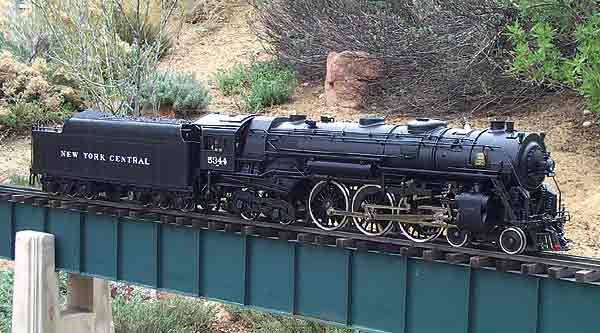
Marc Horovitz 1:29 scale, gauge-1 NYC Hudson USA Trains PO Box 100 Malden MA 02148 Price: $2,299.95 w/o sound; $2,699.95 with Phoenix sound system installed Web site: www.usatrains.com All-metal model of New York Central’s J1e Hudson; die-cast boiler, cab, tender shell, and detail parts; smoke unit synchronized to axle rotation (four puffs per revolution); working […]
Read More…
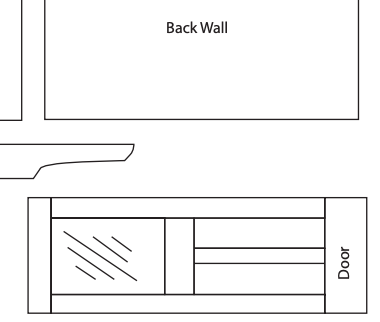
Download these free plans for a work caboose! They accompany our “Garden railway basics” articles from the June and August 2006 issues. Follow along with author Kevin Strong to build a work caboose from styrene. […]
Read More…

Scrap wood, like that pictured here, is readily available and free for the asking. Rene Schweitzer Trestles! Bridges! Cribbing! Wooden rolling stock! There are many applications of unpainted wood for an outdoor pike to challenge the beginner and veteran alike, all requiring tools, time, money, and skill. The most common choices of wood for outdoor […]
Read More…
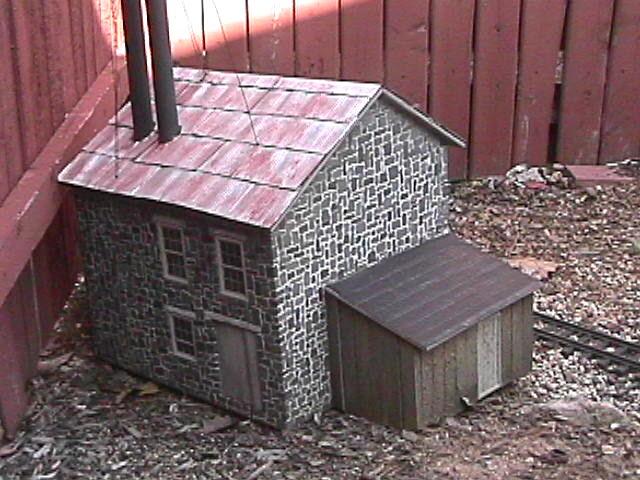
This structure on the Greenbriar Cheat & Elk railway was made out of blue foam insulation board. Randy Mower I have been scratch building structures for my Greenbriar Cheat & Elk garden railroad since 1993. Although I have commercial structures on my railway, I wanted to have buildings that were unique to my railroad, so […]
Read More…
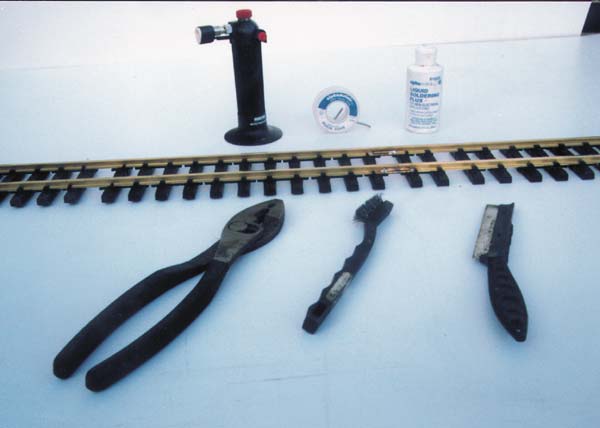
Soldering tools. Top row: mini torch; 40/60 rosin-core solder; liquid flux. Bottom row: heavy-duty pliers to align rails while the solder is hot; a wire brush for cleaning rail ends; and an Atlas Super Saw to cut the rails. Jack Verducci Here, two sections of flex track have been soldered. Notice that the solder has […]
Read More…
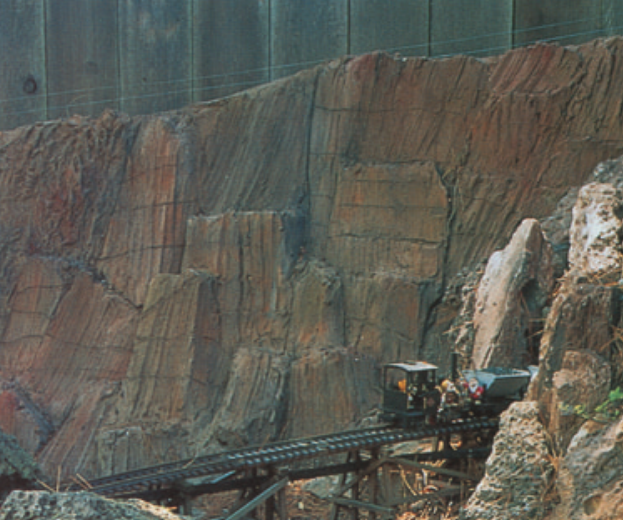
Jack Verducci shows you how to make durable, outdoor rock formations from a mixture he calls “gulapata.” Download the 1997 article free here. […]
Read More…
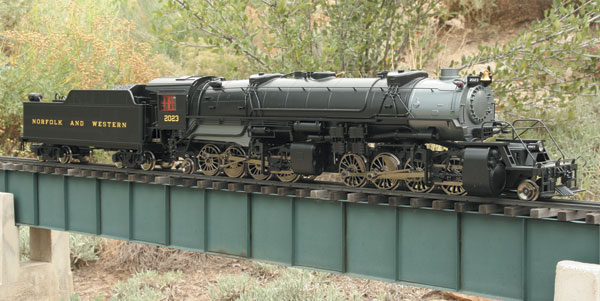
Marc Horovitz 1:29 scale, gauge 1 2-8-8-2 locomotiveAristo-Craft Trains698 South 21st St.Irvington NJ 07111Price: $945 ($993 for Union Pacific)Web site: www.aristocraft.com Plastic-and-metal model of a USRA 2-8-8-2 Mallet locomotive; USRA or Vanderbilt tender, depending upon road name; smoke unit; sound ready; DCC ready; battery ready; control switches under firebox; two motors with flywheels and fans; […]
Read More…












